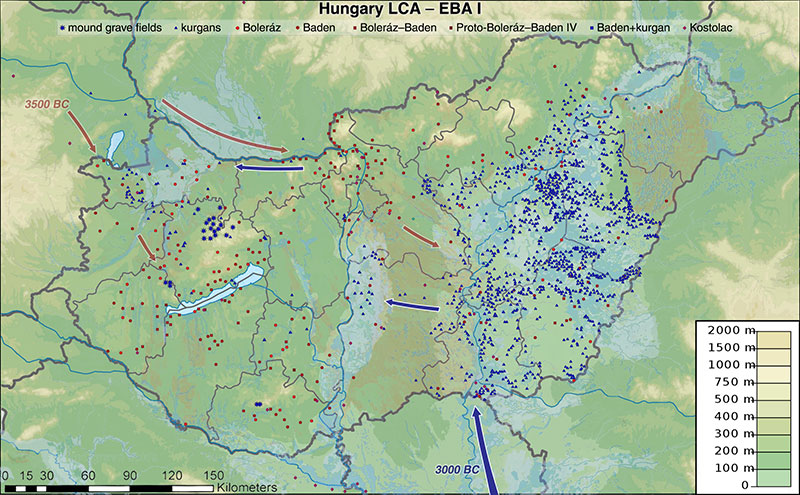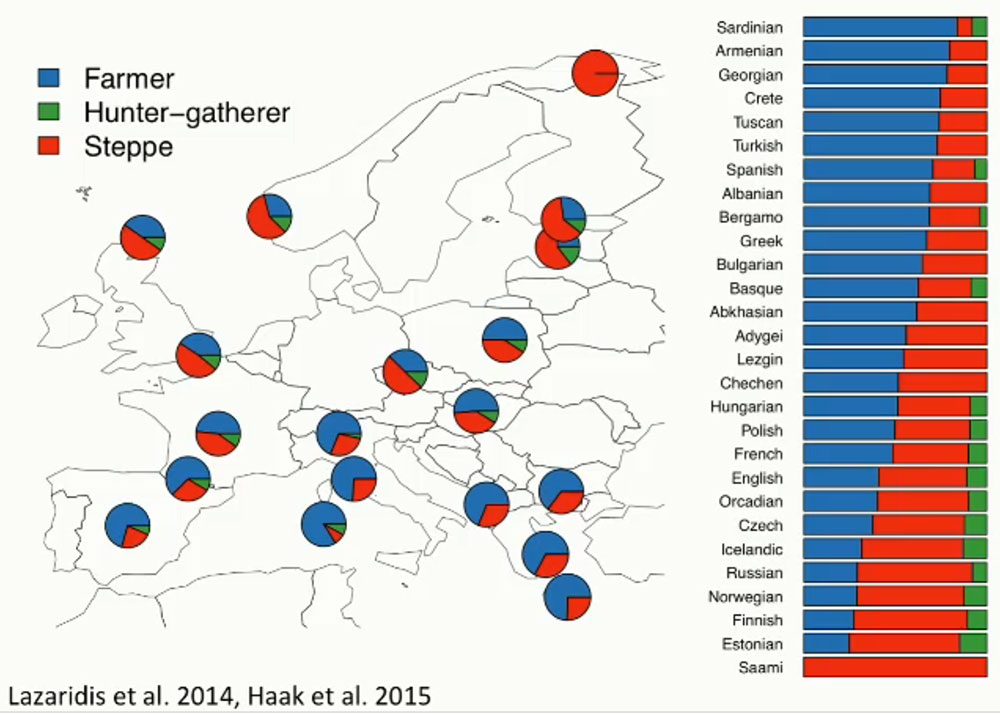The title says it all. I have used some free time to update the series A Song of Sheep and Horses:
- Book One: A Song of Sheep and Horses: eurafrasia nostratica, eurasia indouralica. Languages.
- Books Two & Three: A Game of Clans: collectores venatoresque, agricolae pastoresque & A Clash of Chiefs: rex militaris, rex sacrorum. Cultures and peoples.
- Book Four: A Storm of Hordes: hic sunt leones, hic sunt dracones. Maps and graphics.
I basically added information from the latest papers published, which (luckily enough for me) haven’t been too many, and I have added images to illustrate certain sections.
I have updated the PCAs by including North Caucasus samples from Wang et al. (2018), whose position I could only infer for older versions from previously published PCA graphs.

I have also added to the supplementary materials the “Tip of the Iceberg” R1b tree by Mike Walsh from the FTDNA R1b group, with permission, because some relevant genetic sections are centered on the evolution of R1b lineages, and the reader can get easily lost with so many subclades.
I have also updated maps, including some of the Y-DNA ones, and managed to finish two new maps I was working on, and I added them to the supplementary materials and to the menu above:
One on Yamna kurgans in Hungary, coupled with contemporaneous sites of Baden-Boleráz or Kostolac cultures:

Another one on Steppe ancestry expansion, with a tentative distribution of “steppe ancestry” divided into that of Sredni Stog/Corded Ware origin vs. that of Repin/Yamna origin, a difference that has been known for quite some time already.
It is tentative because there hasn’t been any professional study or amateur attempt to date to differentiate both “steppe ancestries” in Yamna, and especially in Bell Beakers. So much for the call of professional geneticists since 2018 (see here and here) and archaeologists since 2017 (see e.g. here and here) to distinguish fine-scale population structure to be able to follow neighbouring populations which expanded with different archaeological (and thus ethnolinguistic) groups.

I think both maps are especially important today, given the current Nordicist reactionary trends arguing (yet again) for an origin of Indo-Europeans in The North™, now based on the Fearsome Tisza River hypothesis, on cephalic index values, and a few pairwise comparisons – i.e. an absolutely no-nonsense approach to the Indo-European question (LOL). At least I get to relax and sit this year out just observing how other people bury themselves and their beloved “steppe ancestry=IE” under so many new pet theories…
NOTE. Not that there is anything wrong with a northern origin of North-West Indo-European from a linguistic point of view, as I commented recently – after all, a Corded Ware origin would roughly fit the linguistic guesstimates, unlike the proposed ancestral origins in Anatolia or India. The problem is that, like many other fringe theories, it is today just based on tradition, or (even worse) ethnic, political, or personal desires, and it doesn’t make sense when all findings from disciplines involved in the Indo-European and Uralic questions are combined.

Within 20 or 30 years, when genetic genealogists (or amateur geneticists, or however you want to call them) ask why we had the opportunity since 2015 to sample as many Hungarian Yamnaya individuals as possible and we didn’t, when it is clear that the number of unscathed kurgans is diminishing every year (from an estimated 4,000 in the 20th century, of the original tens of thousands, to less than 1,500 today) the answer will not be “because this or that archaeologist or linguist was a dilettante or a charlatan‘, as they usually describe academics they dislike.
It will be precisely because the very same genetic genealogists – supposedly interested today in the origin of R1b-L151 and/or genetic marker associated with North-West Indo-Europeans – are obsessed with finding them anywhere else but for Hungary, and prefer to use their money and time to play with a few statistical tools within a biased framework of flawed assumptions and study designs, obtaining absurd results and accepting far-fetched interpretations of them, to be told exactly what they want to hear: be it the Franco-Cantabrian homeland, the Dutch or Moravian Beaker from CWC homeland, the Maykop homeland, or the Moon homeland.
Poetic justice this heritage destruction, whose indirect causes will remain written in Internet archives for everyone to see, as a good lesson for future generations.